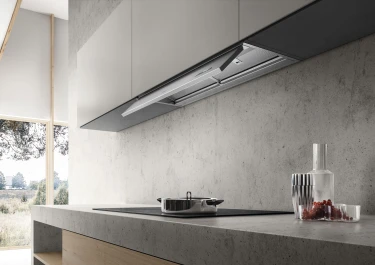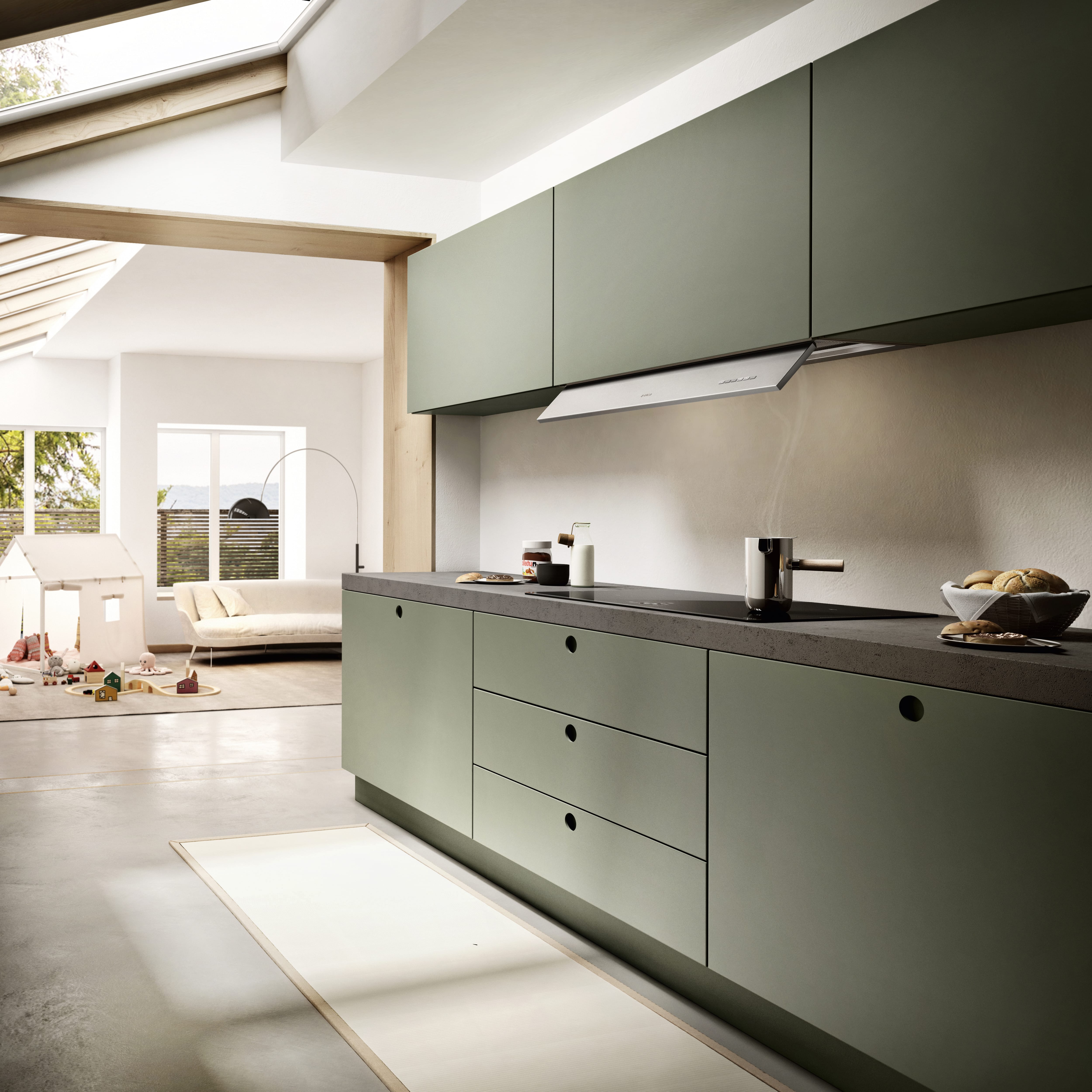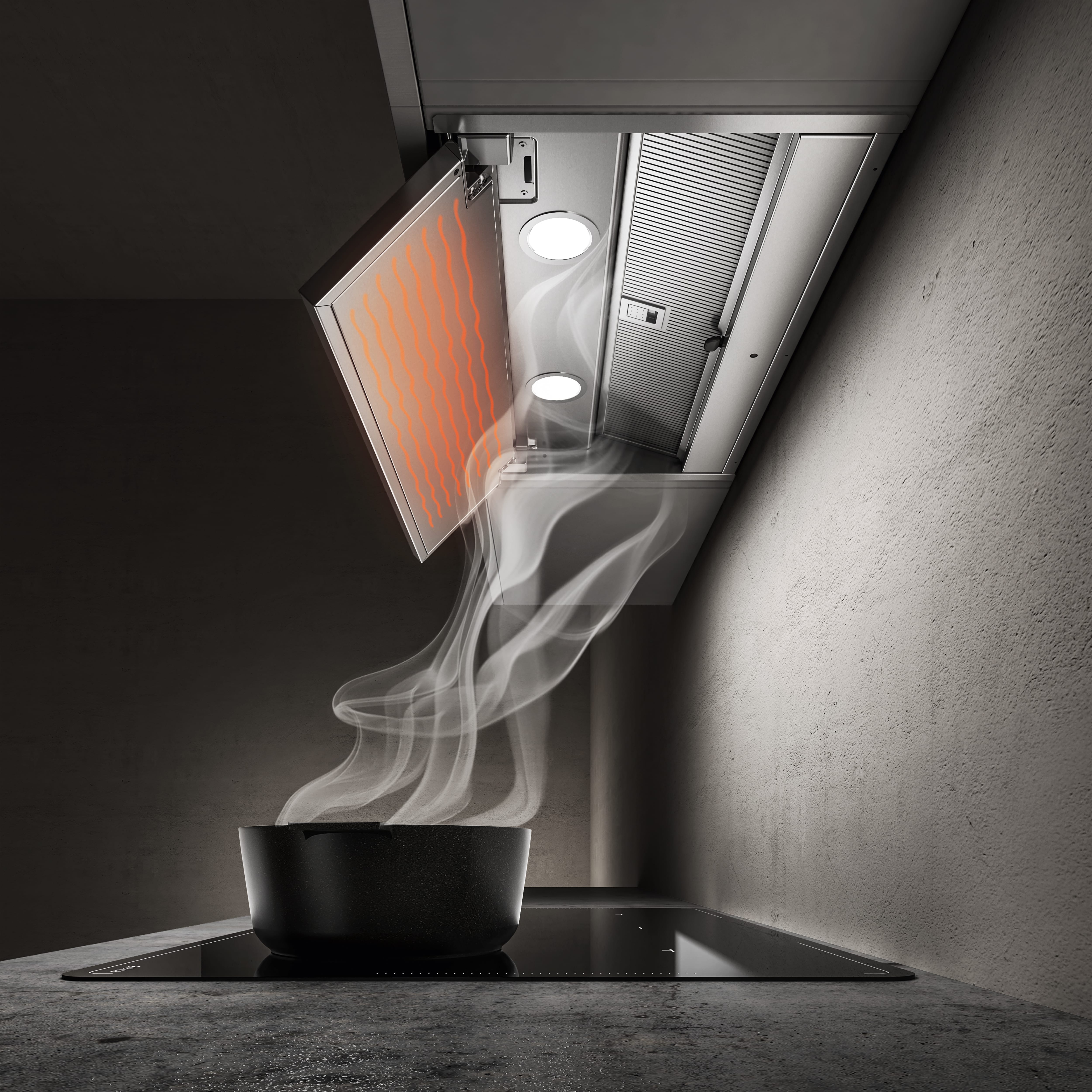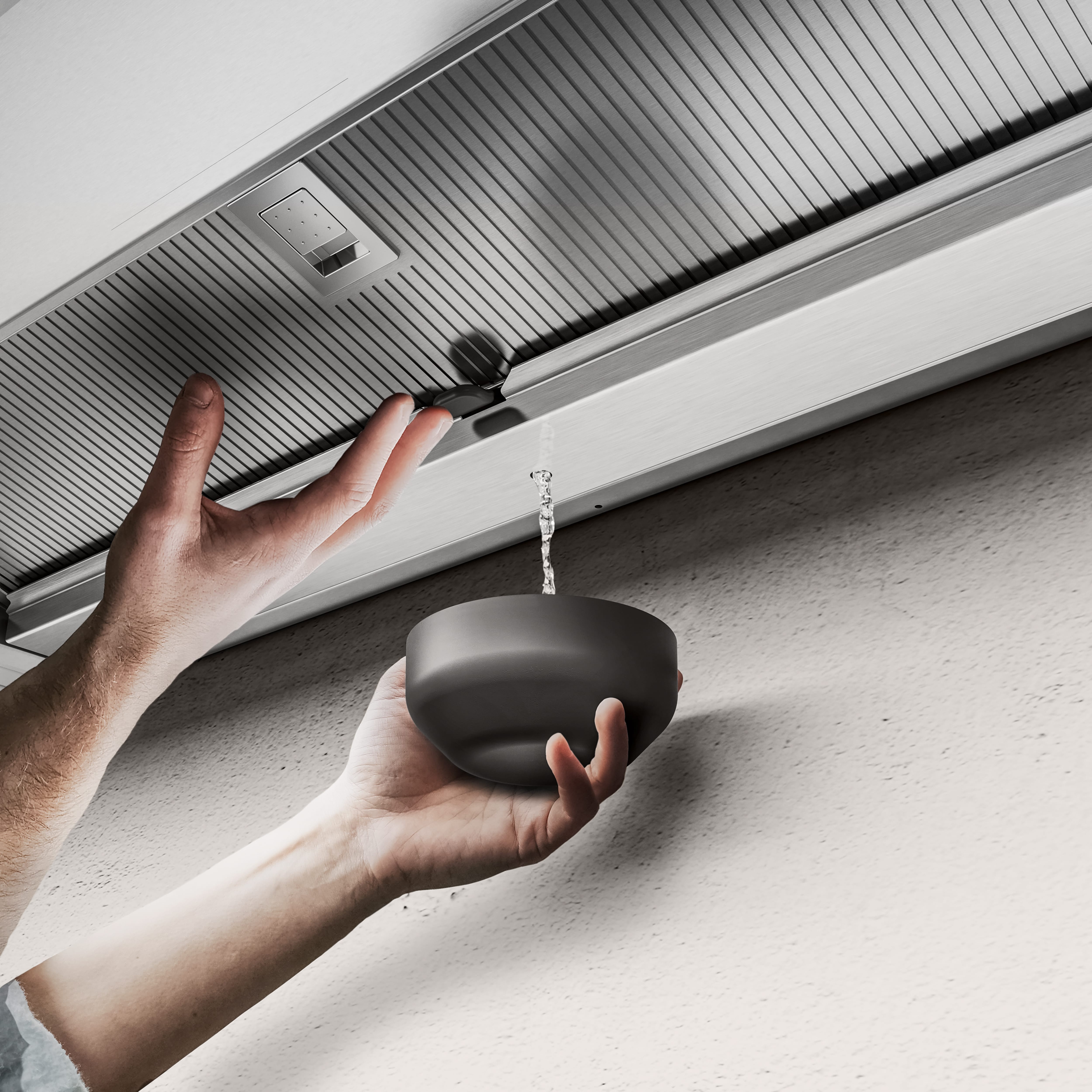
How to avoid condensation
The kitchen is the room in our homes where air quality is altered the most due to cooking: In fact, steaming, boiling and frying inevitably release odors and organic particles into indoor spaces.
In addition to the problem of odors, there is the risk of the formation of condensation when cooking vapors come into contact with colder surfaces, which may wear surfaces and deposit dirt over time. But don’t worry: with a little more attention in the kitchen it is possible to effectively counteract its formation. Here are solutions and remedies to prevent the formation of condensation on our kitchen hoods.
Why does condensation form on the hood?
The kitchen hood is the appliance where the formation of condensation is more evident. But why does this phenomenon occur?
When hot cooking fumes rise, they come into contact with the cold hood surface, thus forming humidity which is transformed into water droplets. This phenomenon is caused by the temperature difference between hot fumes and the cold hood surface, and may be bothersome for two reasons:
-
Surface wear: over time condensation may partially ruin even cabinet surfaces and decrease the system’s extraction system.
-
Possible dripping: the condensation that is formed in the first sections of the duct can easily drip onto the hob, compromising both hygiene and safety.
How to prevent condensation: Elica solutions for your hood
In light of the aforementioned, it is best to equip the hood with systems that can prevent the formation of condensation, and possibly prevent any condensation formed from dripping onto hob burners while cooking.
Some Elica hood models are equipped with No Drip, a system that prevents the formation of kitchen condensation, thus protecting cabinets from vapor. The two main features of this system are:
-
Heating the hood surfaces: as already explained, condensation forms at the moment when cooking vapor meets a cold surface and is deposited as condensation. The No Drip system brings the hood surfaces up to a temperature of about 40°C in order to reduce the formation of condensation to a minimum.
-
Condensation collection: the specific structure of a hood equipped with the No Drip System, has been designed in such a way that any condensation formed on the surface will be naturally conveyed towards a collection tray. In this way dripping onto the hob can be prevented, and the tray may be easily emptied and placed back.
Our main kitchen hood models equipped with such technology are: Boxin No Drip and Majestic No Drip.
Boxin No Drip is a built-in hood of one-of-a-kind design with top-of-the-line features. The No Drip System prevents the formation of condensation by heating the 45° tilted metal visor that protects the cabinet. Its 30.5 cm extraction core allows the best use of the space within the cabinet that houses it: more free space for objects and utensils. Its maximum air capacity of 600 m3/h with 3 speeds, maintains a cleaner and healthier environment, free of kitchen odors. The hood is equipped with LED lights, that diffuse even lighting onto the hob. Installation is super easy and requires very little space.
Majestic No Drip is Elica’s head- free hood in black glass and stainless steel for a clean and elegant look. In this model, the glass surface is heated by the No Drip System. The Touch control found on the hood glass operates the double extraction system, in the central and bottom part of the hood, with top performance in terms of fume capture, silence and efficiency. Condensation droplets are collected into the specific tray, that can hold up to 0.5 l of water and can be easily removed and emptied. The hood is equipped with a Back aspiration system, a product “plus” provided with a conveyer that, by simply rotating the motor, allows the hood to be directly connected to the back wall, thus avoiding the use of a top duct and the consequent need for a chimney: therefore keeping the original look unchanged.
Preventing condensation is easy: all you need to do is choose the most suitable hood for your kitchen.


